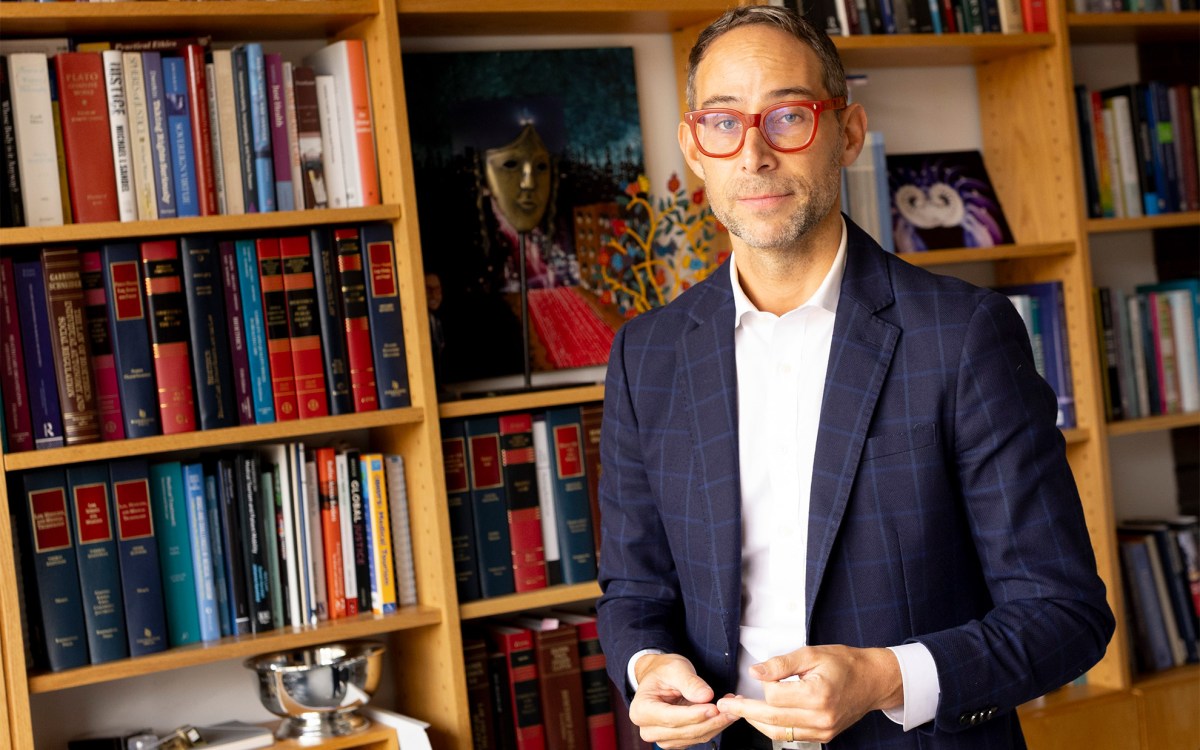New ways found to fight anthrax
Bacteria make their own syringe
John Collier, Presley Professor of Microbiology and Molecular Genetics at Harvard Medical School, began tinkering with anthrax molecules in 1989. He looked into a powerful electron microscope and, for the first time, saw a natural syringe made by an anthrax molecule. Seven individual proteins assemble themselves into a minute syringe that pierces human cells and injects a deadly poison. At first, the victim feels only flulike symptoms, but later, an irreversible sequence can start a person on the way to death. After isolating the syringe subunits, each composed of as many as 568 pieces, Collier and his colleagues were trying to find ways to prevent the syringe from working. Unexpectedly, they discovered that, if only one of the seven subunits is flawed, the syringe cannot inject its poison into a human cell. “There’s a lot of chance in the business of discovery,” Collier says. “When I realized what had happened, I knew we had found a road that could lead to a new type of drug or vaccine. All we needed to do was to mix a mutated copy of a syringe protein with those made by the anthrax itself, and the syringe could not perform its function in poisoning cells.”




